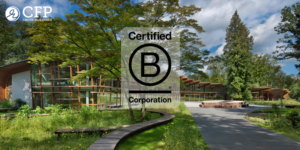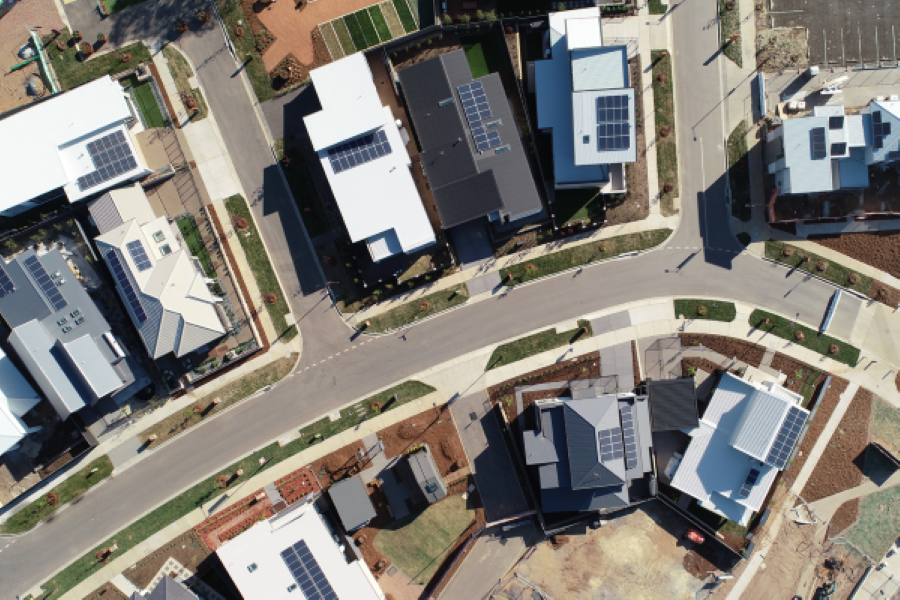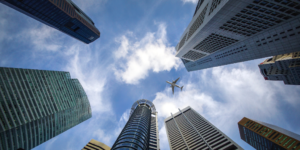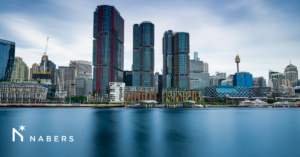

A sustainable shift in Australia: an interview with GBCA CEO Davina Rooney
Davina Rooney has led the Green Building Council of Australia (GBCA) since June 2019. The GBCA’s role is to lead the sustainable transformation of the built environment and has achieved over 4000 certifications with rating tool Green Star. We had the pleasure of interviewing Davina on her remarkable career in green buildings and reducing carbon down under. In this interview, Davina shares all about her passion for sustainability, the shift that is happening in Australia and what to expect next.
For people who don’t know you yet: what is your role and what ignited your personal mission for sustainability?
“I became the CEO of the Green Building Council of Australia in 2019 and prior to that I was the General Manager of Sustainability and Corporate Procurement at Stockland.

I have always been passionate about sustainability, and I remember starting as a graduate engineer when sustainability was regarded as a one-off demonstration of leadership and capability. Over time we have successfully shifted from that ‘one-off’ mindset to embracing sustainability at scale. I worked on a community project in the Indian Himalayas in 2004; that was my first solar project, and all local materials – when I came home I realised that I wanted to take these exemplar projects and make them the norm.”
How has the role of the GBCA evolved since the launch in 2002? Can you name the biggest milestones that were achieved?
“GBCA has come a long way since its inception in 2002. We developed Green Star which has now issued close to 4000 certifications for buildings, communities, fitouts and homes across Australia. We have a strong education and events program which upskills thousands across our industry each year on best practice and innovation. And our advocacy program has worked closely with governments to raise minimum standards in building codes and planning policies. It’s difficult to single out individual milestones because there have been so many, but seeing Australia top the GRESB table for 12 consecutive years tells us that we’ve come a long way in achieving our goal for industry-wide commitment to sustainabilty.”
What is the biggest challenge in sustainable real estate Australia is facing?
“Across the world, we are scrambling to reduce our emissions to tackle climate change. We know that buildings hold the key to major carbon reductions, but we must act now to decarbonise our new and existing buildings before the decade of decarbonisation slips away. We’ve said that electifying our buildings, and powering them with renewables will be essential to put us on the path to decarbonisation. And it’s been great to see so many major players in the building sector, and across governments take the lead in this space. We also know that we need to broaden our scope to tackle upfront carbon and circular economy thinking. We’re starting to see industry stepping up the challenge, and we look forward to working with manufacturers to influence the supply chain for sustainable products.”
What are the most important developments concerning legislation in Australia?
“Last year, our National Construction Code was amended to increase the energy efficiency requirements for new homes. This was hugely significant as we face a changing climate that is generating more extreme weather events. As a result of the changes, all new homes will need to meet a higher standard of thermal performance, ensuring they can be heated and cooled more effectively and efficiently. This will result in healthier homes for occupants and the planet, and cheaper energy bills. We’re continuing to work with governments and industry to transition away from fossil fuels in buildings.”
“The Australian Government has committed to an emissions reduction target of 43% by 2030, and to reach net zero by 2050. A Net Zero Authority has been established by the government to guide the transformation. We are excited to work with our partners in government to deliver these goals, and increase ambition where possible.”
Davina Rooney, CEO Green Building Council of Australia
What is the role of banks in Australia in reaching these goals and how can they contribute to sustainable finance?
“While the property sector has taken great strides in the sustainable transformation of our buildings, we are now seeing banks and financial institutions help to facillitate financing with rate reductions for sustainable retrofits and builds. The banks have an essential role to play if we are to meet our Net Zero targets.”
Can you give us a little sneak peek on what we can expect on sustainable real estate in the upcoming year?
“We expect in the year ahead that we will see a greater focus on circularity and building products and materials. Australia alone accumulates 76 million tonnes of waste a year. Circularity demands a radical rethink of every part of our economy, so we look forward to working with governments and industry to find better solutions. And we look forward to finalising and introducing our new Green Star fitouts rating tool to market, which will have a commitment to 100% circularity, representing a seismic shift in thinking.”
CFP Green Buildings is a partner of the Green Building Council of Australia. As sustainability becomes increasingly critical in the Australian real estate sector, understanding the frameworks and regulations surrounding energy efficiency and carbon reporting is essential. Would you like to learn more? Read our article on Australian laws and programmes or get in touch.







